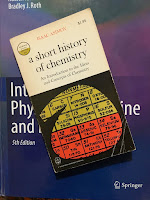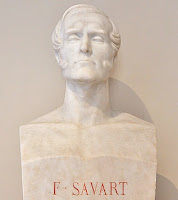Let’s see what my favorite books about writing say.
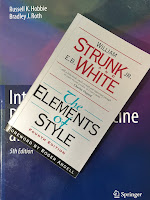 |
| The Elements of Style, by Strunk and White. |
Strunk and White (The Elements of Style): “Do not attempt to emphasize simple statements by using a mark of exclamation…The exclamation mark is to be reserved for use after true exclamations or commands.”
 | |
| On Writing Well, by William Zinsser. |
Zinsser (On Writing Well): “Don’t use it unless you must to achieve a certain effect. It has a gushy aura…Resist using an exclamation point to notify the reader that you are making a joke or being ironic…Humor is best achieved by understatement, and there’s nothing subtle about an exclamation point.”
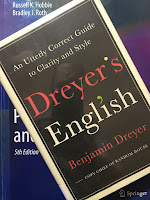 |
| Dreyer's English, by Benjamin Dreyer. |
Dreyer (Dreyer’s English):
“Go light on the exclamation points. When overused, they’re bossy,
hectoring, and, ultimately, wearying. Some writers recommend that you
should use no more than a dozen exclamation points per book; others
insist that you should use no more than a dozen exclamation points in a
lifetime.”
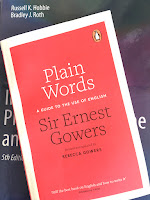 |
| Plain Words, by Sir Ernest Gowers. |
Gowers (Plain Words): His disdain for the exclamation point is so complete he doesn’t even acknowledge that it exists.
Below I list eleven places where exclamation points appear in IPMB.
In each case, I indicate if we should keep the exclamation point or
toss it out. Note: I don’t include any exclamation point that indicates a
factorial, such as 4! = 1 × 2 × 3 × 4 = 24; that’s a mathematical symbol, not punctuation.
Page 29: Homework Problem 43 in Chapter 1 says “Suppose a student asked you, ‘How can blood be moving more slowly in a capillary than in the aorta? … The capillary has a much smaller cross-sectional area than the aorta. Therefore, the blood should move faster in the capillary than in the aorta!” The exclamation point belongs to the hypothetical student, not to Russ and me. If you don’t like it, take it up with the student (and beware, those students tend to be gushy). Keep.
Page 44: In Chapter 2, Russ and I write “Moreover, commercial graphing software does not impose this constraint on log–log plots, so it is becoming less and less likely that you can determine the exponent by glancing at the plot. Be careful!” The exclamation point is a warning. Keep.
Page 51: In the references at the end of Chapter 2, we cite Albert Bartlett’s delightful book “The Essential Exponential!” The exponential point is Bartlett’s, and is part of the title (like Oklahoma!). Keep.
Page 53: In the introduction to Chapter 3, Russ and I explain why statistical methods are so useful in thermodynamics. We estimate how long is required to simulate all the particles in a cubic millimeter of blood. We conclude “If a computer can do 1012 operations/s, then the complete calculation for a single time interval will require 108 s or 3 years!” In other words, a really long time. My feelings on this one are mixed. Toss.
Page 270: In a footnote in Chapter 10, we write “Strictly speaking, (dV/dt)alveoli is not the derivative of a function V. (It always has a positive value, and the lungs are not expanding without limit!) We use the notation to remind ourselves that it is the rate of air exchange in the alveoli.” If I could delete only one exclamation point from IPMB, this would it. The thought of those lungs getting bigger and bigger is just disturbing. Toss.
Page 308: In Chapter 11, Russ and I compare two methods for doing a least squares fit of an exponentially decaying function. Method 1: take the logarithm of the data and then do a linear fit. Method 2: do a nonlinear fit to the original data. We end the analysis with a moral: “Use nonlinear least squares, Method 2!” Keep.
Page 388: A section in Chapter 14 has tricky units. We remind the reader to “Be careful with units!” Exclamation points are legitimate when issuing a command or warning. Perhaps, however, we shouldn’t have used both bold and an exclamation point. Keep.
Page 484: When explaining the linear-quadratic model for radiation damage, Russ and I concoct an illustrative but unrealistic example. We then warn the reader “(This is not realistic!).” I wonder if we should’ve made a more realistic example and avoided the exclamation point. Toss.
Page 497: In Homework Problem 8 of Chapter 16, Russ and I discuss x-ray imaging devices used to fit kids’ shoes, common in the 1940s. “These marvelous units were operated by people who had no concept of radiation safety and aimed a beam of x-rays upward through the feet and right at the reproductive organs of the children!” My vote is to keep this exclamation point at all costs! Let’s even keep the sarcasm. Keep.
Page 587: In Appendix H, we use an exclamation point when trying to make a joke. We had already developed the binomial probability distribution using p for the probability of success and q for the probability of failure. Then we write “Suppose that we do N independent tests, and suppose that in healthy people, the probability that each test is abnormal is p. (In our vocabulary, having an abnormal
test is ‘success’!).” Lame. Toss.
Page 593: Appendix I has a footnote containing my favorite exclamation point in Intermediate Physics for Medicine and Biology. It appears when we introduce Stirling’s formula: ln n! ≈ n ln n - n. “For more about Stirling’s formula, see N. D. Mermin (1994) Stirling’s formula! Am J Phys 52: 362–365.” The exclamation point is a pun. Keep!








